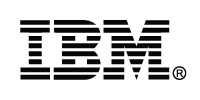Navigating Supply Chain Uncertainty: The Role of Predictive Maintenance
In a perfect world, supply chains would run like clockwork. There would be predictable lead times, steady demand and minimal surprises. But today’s world isn’t that tidy.
Tariffs, once background noise in the rhythm of global trade, have now taken center stage as emerging policies reshape the flow of goods worldwide. While trade strategies remain hazy and ever-changing, supply chain stakeholders have been forced to navigate uncertainties such as fluctuating import costs, rapid supplier reshuffles and more, potentially leading to increased expenses and disruptions. Inflation, workforce constraints, trade route instability and commodity fluctuations collectively introduce significant volatility into the system, increasing the likelihood of operational disruptions.
Expecting efficiency is no longer enough for manufacturing leaders, operations executives and supply chain strategists. Today’s turbulence reminds us that the supply chain is a delicate global system that can come under fire at any time, making it necessary for stakeholders to plan for disruption. Any natural disaster, labor shortage, technological disruption or event can disturb operations in the blink of an eye, just like we learned during the COVID-19 pandemic, the Suez Canal blockage and countless other wake-up calls.
With no control over external disruptors, supply chain stakeholders can only focus on one thing: building resiliency. But how? While supplier diversification, nearshoring and digital logistics tools have all helped improve agility, there’s a foundational element often overlooked, and that is the reliability of plant-level operations. Amid macro-level volatility, it’s what happens inside the facility, specifically with production assets, that determines success.
Sensors, Savings, Stability and Predictive Maintenance
As the impacts of tariffs and trade uncertainty continue to surface, investing in reliability has never been more important. In an era of heightened operational risk, the cost of doing business rises fast, lead times rapidly extend, inventories become stressed and suppliers sometimes get knocked offline altogether. In this environment, a single unexpected machine failure is more than just a headache; it’s an operational risk that can quickly compound already tight margins and complex delivery schedules.
Imagine the part you used to replace in three days now takes 12 weeks to source. On top of that, it’s also likely that the part is more expensive or is only available through a secondary market. In many cases, this would force teams into an emergency response mode: reprioritizing production, pulling in resources from other locations or expediting parts at a premium. That is not just inefficient, it is unsustainable.
Predictive maintenance can serve as a strategy that shifts that power dynamic. By using sensors, AI and human expertise, predictive maintenance can spot failure indicators—a change in a vibration signature or a change in temperature—before they snowball into catastrophic breakdowns. This maintenance strategy is taking the crisis out of machine upkeep, flagging early signs of trouble long before failure occurs.
Instead of reacting to problems as they arise, predictive maintenance equips teams with ample lead time to get maintenance done. Today—especially as economic volatility threatens the supply chain—that lead time is leverage. As the supply chain faces another stressor in the form of tariffs, predictive maintenance stands out as a strategy that can increase resilience and stability from sourcing all the way to delivery.
Case Study: Owens Corning
Downtime is one of the biggest sources of lost productivity in the supply chain. After all, no movement equals no revenue. As tariffs and other uncertainties only increase manufacturing costs, it’s never been more important to ensure that every part of the supply chain is optimized for efficiency with near-zero chance of failure. With the foresight of predictive maintenance, supply chain stakeholders can plan smarter by scheduling maintenance during low-production windows, accurately forecasting spare parts needs and preempting other business stressors.
Because the supply chain is complex and interconnected, disruption at any level will have a direct impact on all subsequent steps. To avoid cascading effects of downtime, supply chain stakeholders can’t cross their fingers and hope a setback doesn’t occur; they must adopt solutions that work quickly.
Global manufacturing company Owens Corning leveraged predictive maintenance technology to uncover critical damage to one of the ball mills at its Tessenderlo Plant, including a cracked non-drive-end shaft and a damaged white metal bearing shell. Even though this damage was serious, sensors flagged the impairments before the mill completely shut down. With this insight, the company had enough time to weather the 17-week lead time needed to order and receive replacement parts, saving more than $11.2 million in production losses and repair costs.
Owens Corning’s resilience is an example of utilizing sensor-driven insights for emergency avoidance, something that will only become more useful as manufacturers work to mitigate additional costs.
Navigating Uncertainty
Uncertainty is the only constant in today’s high-stakes supply chain landscape, underscoring the need for proactivity rather than reactivity. As external disruptors like trade shifts threaten to slow the movement of goods, supply chain leaders must pivot to strategies that deliver foresight and resiliency while cutting back on tariff-related expenses.
Today, predictive maintenance is helping stakeholders align asset criticality, production bottlenecks, lead time and sourcing strategies, trade-related procurement restraints and risk mitigation plans, reflecting a shift toward coordinated resilience.
Even though tariffs are just the latest development in supply chain instability, tomorrow could bring something new. Because uncertainty is never going away, the most successful companies will be those that control what they can and build buffers against what they can’t. Predictive maintenance may not influence global trade policies, but it does give manufacturers the insight to keep going when external forces are making everything else harder.






